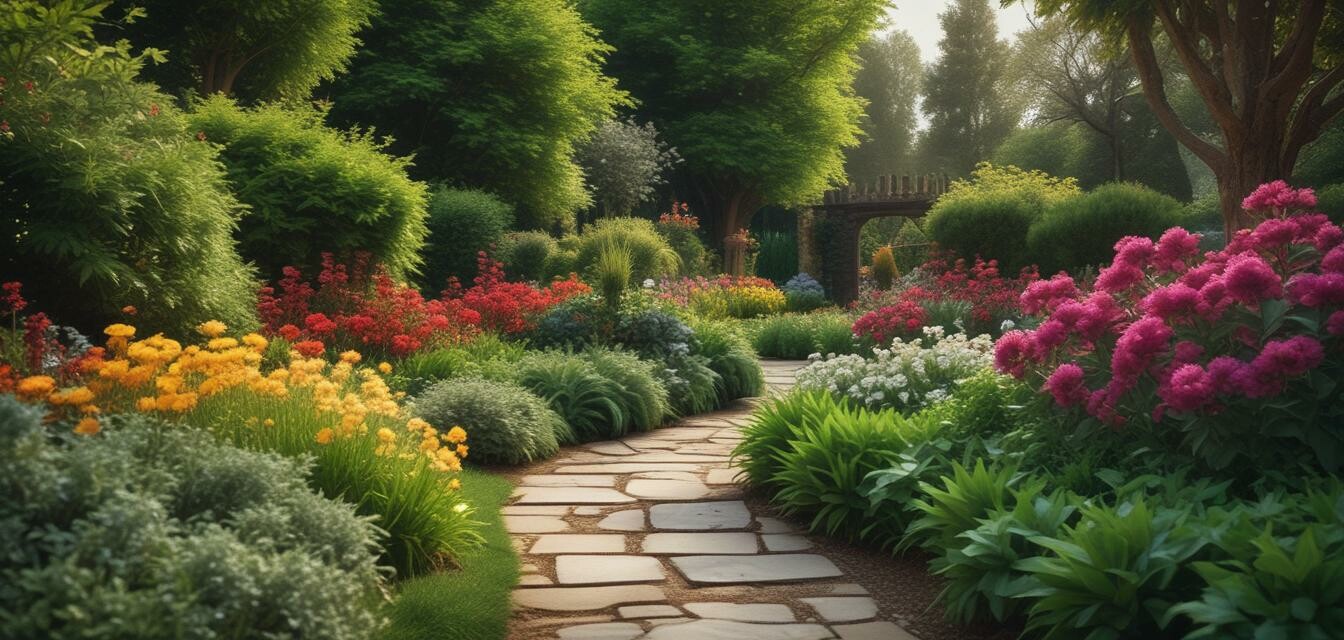
Designing Your Garden for Year-Round Growth
Key Takeaways
- Incorporate seasonal plants for continuous blooms.
- Design with color, texture, and height in mind.
- Plan for appropriate sunlight and soil types.
- Use hardscaping elements to enhance garden structure.
- Implement a solid irrigation plan for consistent watering.
Designing a garden that thrives throughout the seasons is an art that combines careful planning and a creative touch. Whether you are a seasoned gardener or just starting, understanding how to select and arrange plants based on seasonal changes will elevate the beauty and yield of your outdoor space. Here, we will explore effective strategies for creating a garden that offers beauty and productivity year-round.
Choosing the Right Plants
To achieve year-round growth, it’s essential to select plants that bloom in different seasons. Here’s a guide on suitable plants for each season:
| Season | Suggested Plants |
|---|---|
| Spring | Daffodils, Tulips, Hyacinths |
| Summer | Sunflowers, Zinnias, Lavender |
| Fall | Asters, Mums, Ornamental Grasses |
| Winter | Evergreens, Winterberry, Hellebores |
Designing with Color and Texture
Designing your garden isn't just about choosing plants; it's about creating visual interest through color and texture. Consider the following tips:
- Color Schemes: Select a color palette that complements your home.
- Plant Heights: Layer plants from tall to short to create depth.
- Seasonal Changes: Choose plants that offer different colors throughout the year.
Utilizing Hardscaping Elements
Incorporating hardscaping elements can enhance the structure and functionality of your garden. Here are some elements to consider:
- Paths and Walkways: Use stone or mulch to guide visitors through your garden.
- Garden Borders: Define areas with bricks or wooden logs.
- Seating Areas: Create spots to relax and enjoy the view.
Planning for Sunlight and Soil
Understanding your garden's specific conditions is crucial. Factors such as sunlight exposure and soil type can significantly impact plant growth.
- Sunlight: Observe how many hours of sunlight each area receives daily.
- Soil Type: Conduct a soil test to determine its quality and pH.
- Drainage: Ensure that your garden has proper drainage to support plant health.
Effective Irrigation Planning
Consistency in watering is vital for healthy plants. Here’s how to plan your irrigation:
- Drip Irrigation: Use drip systems for efficient water delivery.
- Timers: Install timers to automate watering schedules.
- Mulching: Apply mulch to retain moisture in the soil.
Pros
- Year-round blooms enhance property aesthetics.
- Variety of plants attracts beneficial wildlife.
- Efficient irrigation saves time and resources.
- Thoughtful design can increase property value.
Cons
- Requires a higher initial investment in plants and materials.
- Maintenance needs can be demanding.
- Choosing the wrong plants for your climate can lead to failure.
Final Thoughts
Creating a garden that flourishes year-round is achievable with careful planning and creativity. By selecting the right plants, understanding your garden's environment, and incorporating hardscaping, you can cultivate a lush outdoor space that brings joy and tranquility throughout all seasons. Don't forget to explore our Garden Inspiration category for more ideas and tips to inspire your gardening journey!
Further Exploration
Interested in more ways to enhance your gardening experience? Consider visiting our Garden Tools page for essential equipment, or check out innovative practices in our Eco-Friendly Fertilizers section.